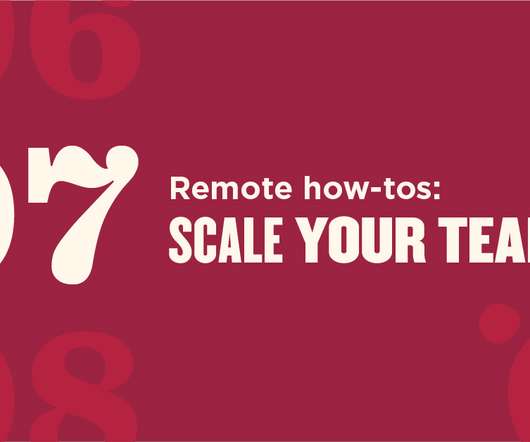How to scale a remote team successfully
HiBob
JANUARY 17, 2022
Since the pandemic, organizations around the world have had to shift to remote and hybrid work models fast–all while experiencing hypergrowth. We spoke with Sharon Koifman, the founder of Distant Job , about her thoughts on how companies can painlessly adjust to the new normal and successfully scale their remote teams.























































Let's personalize your content